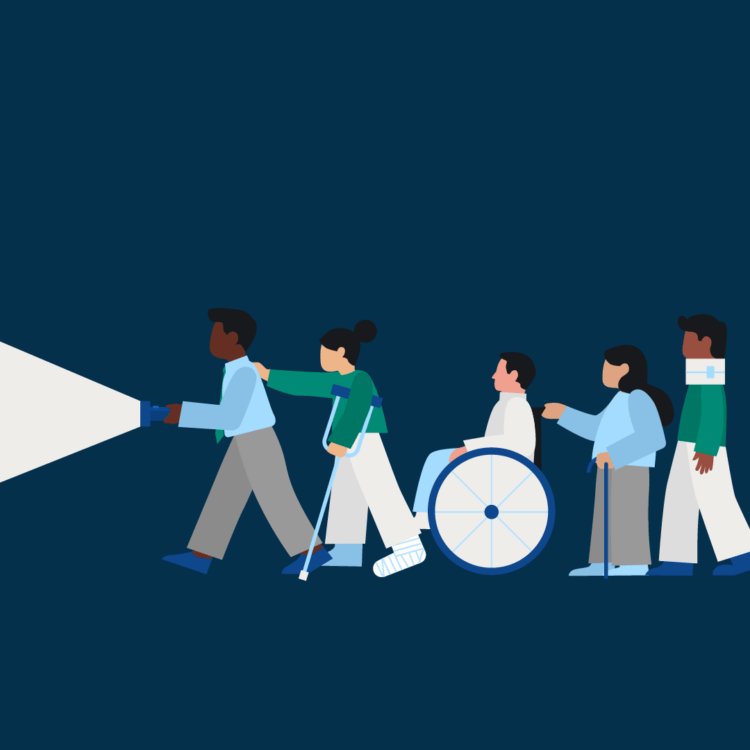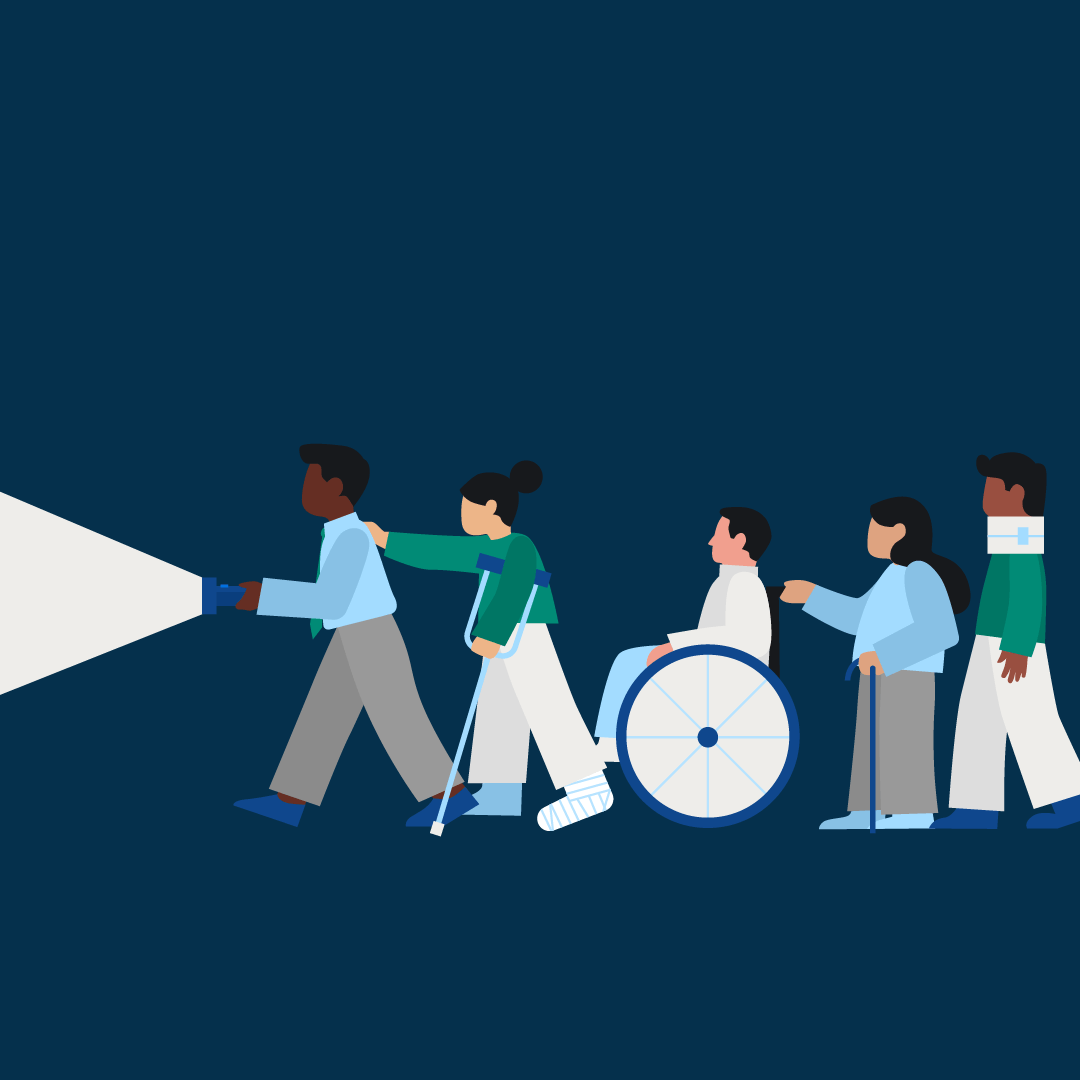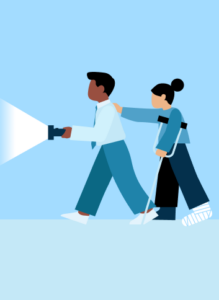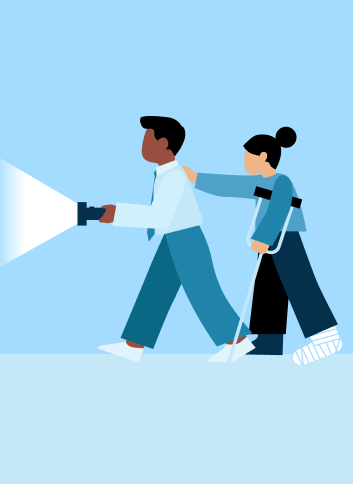When life takes an unexpected turn and accidents happen, the aftermath can be overwhelming—especially for people who sustain personal injuries as a result. There are medical bills to contend with, endless questions from medical staff and sometimes law enforcement, not to mention emotional distress.
On the plaintiff’s side, a personal injury lawyer is a valuable ally who can help guide injured clients through the legal maze and ensure their rights are protected. And though most people don’t think of the defense, personal injury lawyers do work the opposite side of the case as well. In this blog post, we’ll delve into the specifics of what personal injury lawyers do.
The role and responsibilities of a personal injury lawyer
Personal injury (sometimes referred to as PI) law encompasses a broad spectrum of cases ranging from car accidents and slip-and-fall incidents to medical malpractice and product liability. A personal injury lawyer specializes in this area of law and represents individuals who have suffered harm due to the negligence or intentional acts of others.
Beyond being a source of legal expertise, what personal injury lawyers do encompasses a wide range of responsibilities. They provide clarity for clients and also help them assess the strength of their case while providing an objective analysis of potential legal issues. Here are a few more examples:
- Case evaluation: Personal injury lawyers meticulously assess the details of each case, such as the circumstances surrounding the injury. They may also gather evidence in order to determine the viability of a legal claim.
- Client management: One aspect of the work that tends to fly under the radar is being able to manage clients, who may omit (whether deliberately or by accident) important details, believe their case has more legal merit than it does, or have otherwise unrealistic expectations for the case’s outcome. It is crucial for your own success and your firm’s reputation that you are able to communicate clearly with clients and manage their expectations.
- Legal representation: A significant aspect of a personal injury lawyer’s role is to represent clients during legal proceedings, which includes negotiations with insurance companies, filing lawsuits, and advocating for clients in court if a fair settlement cannot be reached.
- Negotiation with insurance companies: Beyond negotiating with insurance companies on behalf of clients, personal injury lawyers also coach their clients on how to respond to questions, control the conversation with liability carriers to protect their clients’ interests, and ensure fair compensation.
- Trial representation: If a case proceeds to trial, a personal injury lawyer will represent their client in court.
The value of a personal injury lawyer
Personal injury lawyers can significantly impact the outcome of cases, and it’s important that you can communicate your value to a prospective client. Instead of pursuing cases themselves, a client who has retained your services has someone to help them:
- Navigate complex legal processes – The legal system can be overwhelming for those unfamiliar with its intricacies. A key part of the role of a personal injury lawyer is to guide clients and give them confidence throughout the process.
- Maximize compensation – Good personal injury lawyers are effective advocates for their injured clients, and help them secure the maximum compensation possible to cover medical expenses, lost wages, and other damages. Clio, for example, helps with tracking expenses and helps you close out cases more quickly:
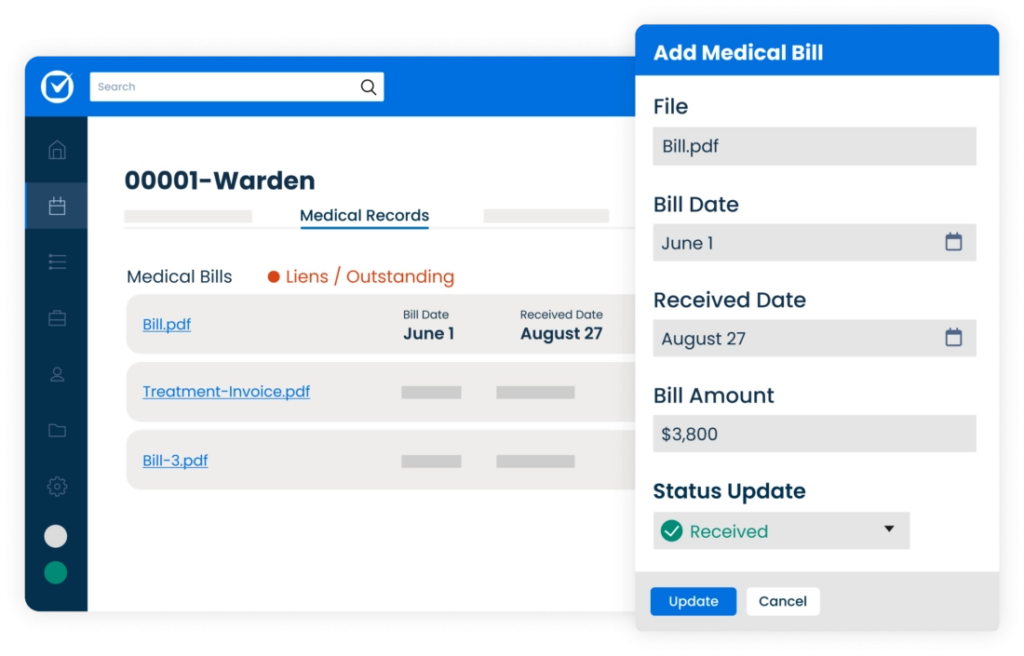
- Maintain an objective perspective – Emotions can run high after an injury. A personal injury lawyer provides an objective viewpoint and helps clients make decisions based on legal merit rather than emotions.
A few examples of personal injury case types
As a personal injury attorney, you’ll handle a broad spectrum of injury-related cases including the following—each of which comes with its own complexities:
| Type of PI case | Complexities involved |
| Car accidents: Injuries resulting from car crashes due to another driver’s negligence | Determining fault, assessing damages, and dealing with insurance companies |
| Slip-and-fall incidents: Injuries sustained in the workplace or on someone else’s property due to hazardous conditions | Proving negligence and establishing liability, which may require a detailed examination of the premises where the client was injured |
| Medical malpractice: Harm caused by healthcare professionals’ negligence | Navigating the intricacies of medical procedures, standards of care, and establishing causation |
| Product liability: Injuries resulting from defective products | Identifying the party responsible for the defect and establishing causation |
Key steps in the legal process for seeking compensation
As you help clients seek compensation for personal injuries, there are several key steps to keep in mind:
- Initial consultation – Meeting with the client to discuss the details of the case, assess its merits, and understand the legal process
- Case filing – Filing the required legal documents to initiate the legal proceedings
- Discovery phase – Gathering relevant information and evidence to build the cases
- Negotiation – Having discussions with the opposing party or insurance company to reach a fair settlement — there are tools that can help you quickly estimate settlement amounts, such as the settlement calculator in Clio’s practice management platform:
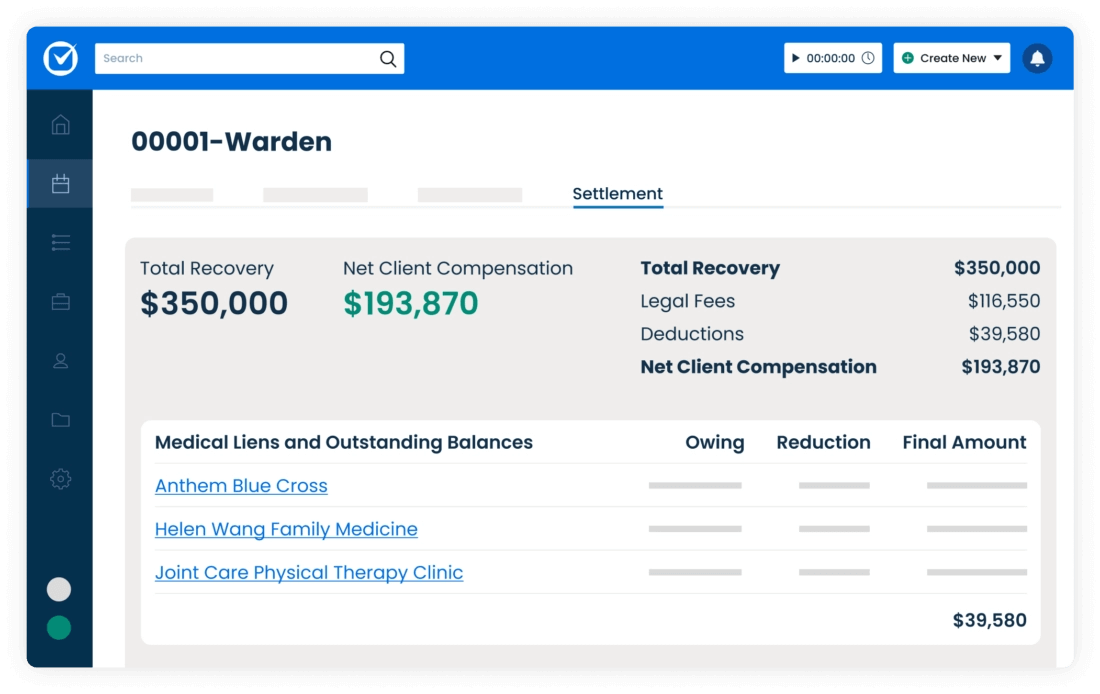
- Trial – Presenting evidence and arguments before a judge and/or jury if a settlement cannot be reached and the case proceeds to trial
Different strategies to employ when seeking compensation
Personal injury lawyers typically use a variety of strategies to strengthen their clients’ cases:
- Evidence collection: Thoroughly gathering and presenting evidence is crucial for establishing liability and damages. From interviewing witnesses to obtaining medical records and documenting lost wages and medical bills, this step is key to a successful result for your clients.
- Legal research: Staying informed about relevant laws and precedents helps you build a more compelling case.
- Negotiation skills: Negotiating fair settlements requires effective communication and negotiation skills.
- Trial preparation: In case of a trial, extensive preparation ensures you are ready to present a persuasive case in court.
Negotiations with insurance companies and opposing parties
Another critical skill for personal injury lawyers is the ability to negotiate on behalf of their clients with insurance companies, hospital billing departments, and the defense. This may be done through avenues such as:
- Demand letters: The first step is often to send a demand letter outlining the damages suffered and the compensation you are seeking for your client.
- Counteroffers: Negotiations frequently involve back-and-forth communication, with each party presenting counteroffers until an agreement is reached.
- Mediation: In some cases, you may decide to go down the path of mediation with a neutral third party facilitating negotiations.
- Litigation threats: The possibility of taking the case to court can strengthen your negotiating position and lead to a more fair settlement offer.
The challenges of dealing with insurance companies
While insurance is intended to provide financial protection for your clients, dealing with insurance companies is notoriously challenging at times. Insurers may attempt any or all of the following during the course of a personal injury case:
- Deny claims or complicate the process so that more complex legal interventions are required to challenge their decision.
- Undervalue claims and offer settlements that do not adequately compensate for the damages suffered. A skilled personal injury lawyer has a good grasp of the true value of a claim (or is able to assess it effectively) while factoring in medical expenses, lost wages, and intangible damages.
- Lengthen the claims process in order to cause financial strain on the injured party.
Personal injury damages and compensation
In personal injury cases, damages refer to the losses suffered by the injured party. These are generally categorized into two main categories: economic damages, which include tangible losses such as medical expenses, property damage, and lost wages; and non-economic damages, which are intangible losses like pain and suffering, emotional distress, and loss of enjoyment of life.
A personal injury lawyer can then seek compensation for expenses or losses related to both of these types of damages, such as:
- Medical expenses for covering the costs of medical treatment, rehabilitation, and ongoing care.
- Lost wages to reimburse income lost due to the injury and recovery period.
- Property damage to compensate for damage to personal property like vehicles and housing.
- Pain and suffering to address the physical and emotional distress caused by the injury.
- Loss of consortium to compensate for the impact the injury may have had on the client’s relationships.
Factors to consider when determining compensation
There are a few key factors that influence the amount of compensation that is typically awarded:
- Severity of injuries: More severe injuries generally result in higher compensation.
- Long-term impact: Consideration of the lasting effects and ongoing medical needs.
- Comparative negligence: The compensation may be reduced if the injured party is found partially at fault.
- Insurance policy limits: Compensation may be limited by the at-fault party’s insurance coverage.
The fee structure for a personal injury lawyer
The cost of hiring a personal injury lawyer is typically based on a contingency fee structure, where the lawyer is only paid if they win the case. Regardless of the fee structure you use, be sure to communicate how you charge for your services clearly in your initial consultation with your client.
(In some firms, if you are plaintiff-side, you may get paid a base salary plus a percentage of settlements—for example, a $100,000 base salary and 7% of legal fees generated.)
Factors that may affect the cost
There are several factors that can influence how you charge for your services as a personal injury lawyer:
- Case complexity: More complex cases may require additional resources and time, affecting the overall cost.
- Legal expenses: You may incur expenses for expert witnesses (like a medical expert), court filings, and other legal necessities.
- Contingency fee percentage: The agreed-upon percentage of the settlement or award can vary depending on where you are located, but is often around one-third (33%) in the United States, according to the ABA.
Managing a personal injury firm?
From handling various injury case types to navigating legal processes and negotiating with insurance companies, personal injury lawyers play a pivotal role in advocating for their clients.
Along with a comparatively low barrier to entry, there are other benefits to practicing personal injury law as well, such as a flexible schedule and a potentially high level of financial compensation for attorneys. Learn how to equip your PI practice with the right tools, such as Clio’s case management software for personal injury firms.
Personal Injury Virtual Summit for Law Firms
Learn how you can win more clients, maximize settlements, and close cases faster with this on-demand webinar that took place on March 19, 2024.
Watch Now